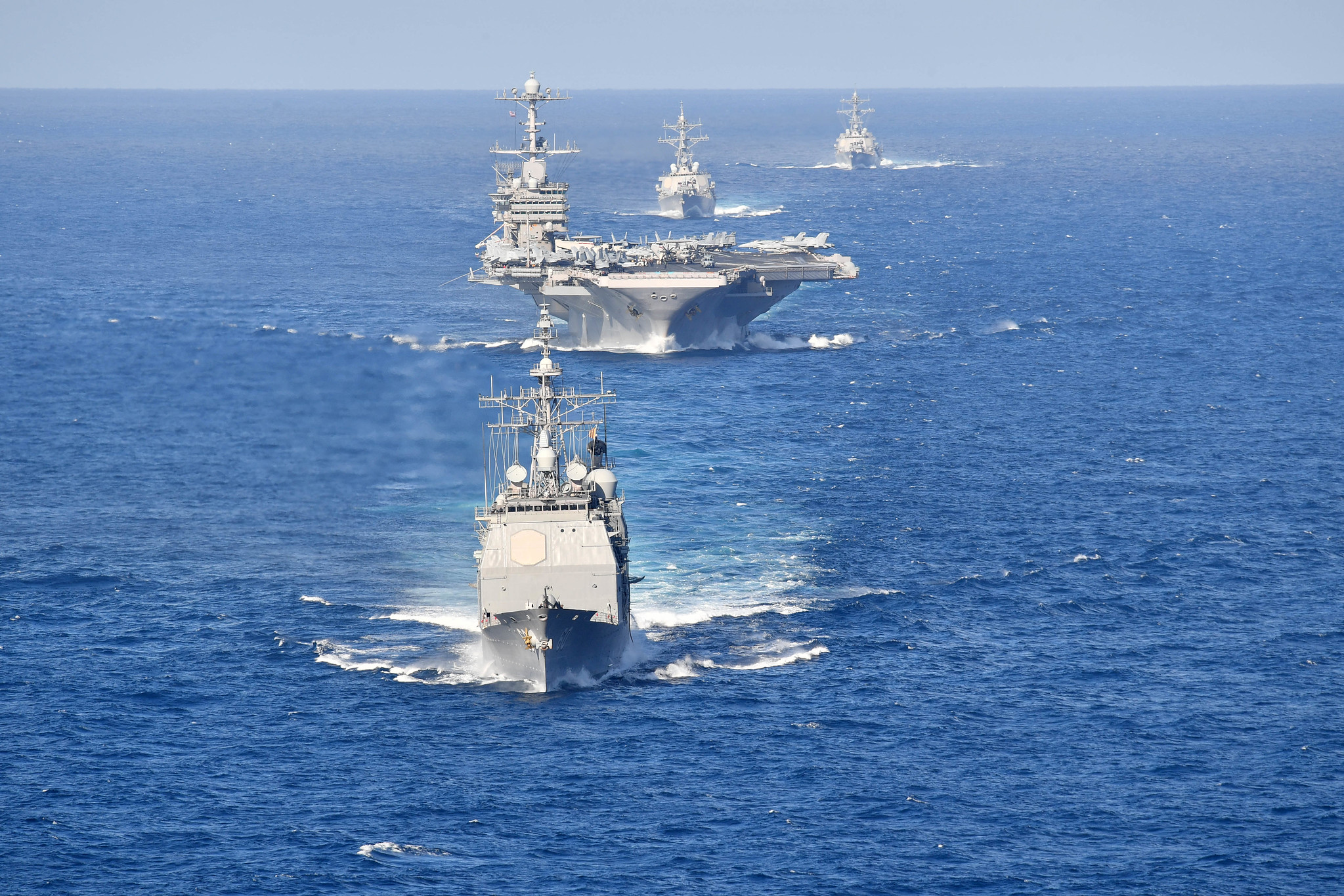
Harry S. Truman Carrier Strike Group in the Atlantic Ocean, April 2019.
WASHINGTON: New analysis of the fiscal 2022 budget request by data and analytics firm Govini shows that the Marine Corps is solidly moving towards the distributed posture service brass publicly embrace, while the Navy lags behind.
For the Marines, “things like [Expeditionary Advanced Basing Operations] as well as the force structure and capability investments that they’re making” are in line with a distributed strategy, Jim Mitre, chief strategy officer at Govini, told Breaking Defense in an interview. “When it comes to the Navy … I think it’s still an open question the extent to which they’re committed to moving towards Distributed Maritime Operations.”
Distributed Maritime Operations (DMO) and Expeditionary Advanced Basing Operations (EABO) are the premiere concepts of operation for the Navy and Marine Corps, respectively. In the future, the theory goes, the services will fight with forces dispersed across the battlespace rather than power being concentrated on a single carrier strike group.
Govini recently completed its scorecard analysis of the Defense Department’s budget request, an annual assessment in which the firm uses a proprietary platform to manipulate and present data in a way to gain insights that are not obvious from viewing the Pentagon’s traditional justification documents.
Mitre and Billy Fabian, Govini’s vice president of strategy, said they judged the services’ ability to shift to their respective CONOPs within the next 10 years; a similar timeframe the Pentagon has offered for embracing DMO and EABO. One of the difficulties in evaluating this, they said, was the lack of projected future spending in the current budget documents, also referred to as the future years defense program.
The Govini executives argued the Marine Corps’ path to EABO was much clearer than the Navy’s to DMO because the weapons and technology the service needs largely exist. In practice, that means swapping heavy armor and tube artillery meant for ground combat in exchange for small amphibious ships for personnel and cargo movement and ground-based missiles able to threaten ships at sea.
Meanwhile the Navy’s path to DMO is clearly seen in its investments in unmanned systems and next generation surface combatants. But the service is planning to rely on technology that is simply not ready for mass production.
“You’d want to see a distribution of [vertical launching system] cells at a wider range than where it is currently, but … at this point, there’s no production-ready alternative for the cruisers,” Mitre said. “And so, it’s going to take a little time until the Navy matures the capabilities that it would need in order to build up the capacity necessary to conduct DMO.”
The scorecard format characterizes spending in one of four categories: activities to equip the force for war is called “outfit;” research and development efforts are dubbed as “offset;” daily operations and missions are labeled as “operate,” and other classes of institutional support not directly related to warfighting are labeled “overhead.”
Mitre summed up the scorecard’s takeaways on the Navy’s activities this way: “Most of the savings the department has garnered by cutting investment in outfit are spent in organizing overhead.”
In other words, the money the Navy has saved on divestment activities — for example, retiring older Littoral Combat Ships and Ticonderoga-class cruisers — is being spent on institutional support rather than operations and training or research and development, according to Govini.
Sullivan: Defense industry ‘still underestimating’ global need for munitions
National Security Advisor Jake Sullivan said that there are “no plans” for another Ukraine supplemental at this point.


























